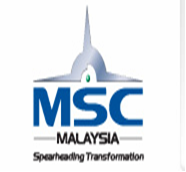In 1997,the Malaysia Government emerged with the electronic government to reinvent itself to lead the country into the Information Age. Implementation of electronic government started with the initiation of Multimedia Super Corridor (MSC) by the Malaysia government.
E-government enhances the convenience, accessibility and quality of interactions with public and businesses at large. It also improves the information flow and processes within the government, improve speed and quality of policy development, and improve coordianation and enforcement.This would enable the government to be more responsive to the needs of citizens.
 E-government is one of the seven flagship applications introduced in MSC. The these flagships, seven main projects were identified to be the core of the e-government applications:
E-government is one of the seven flagship applications introduced in MSC. The these flagships, seven main projects were identified to be the core of the e-government applications:1. Project Monitoring System(PMS)
2. Human Rerouse System Information System(HRMIS)
3. General Office Environment( GOE )
4. Electronic Procurement (EP)
5. Electronic Services (E-Services)
6. Electronic Labor Exchange (ELX)7. E-Syariah
According to the survey done by Brown University on Rhode Island, US on international e-government ranking list, Malaysia has improved tremendously since 2005 and now is ranked 25th in the world. Meanwhile, there are several successful implementation of e-government in Malaysia which are :
(i) Government’s drive for e-government services
(ii) SMS alert on e-government services
(iii) Online renewal of driving licenses
(iv) Electronic filing of income tax forms
(v) Voter information
(vi) Details for government tenders
(vii) Employment opportunities

Government has sourced out several stragies to enable the citizens easier to adapt to current e-government applications.
1. The main concern here was the language barrier. In early stage of implementations of e-government, most of the services offered were only in national language which is in Bahasa Melayu (BM). This somehow caused residents & citizens whom were not really good in BM facing troubles using these services. Therefore now government is offering both English and BM version of web pages in their e-government services.
2. Besides that, large portion of citizens are not aware of the existence of e-government in Malaysia. In recent years, much advertisings can be seen in media to increase the awareness of public of these existing Malaysian E-government services .
3. Most of the web directory of e-government services is complicated. So it need to simplify the navigation of and search for information and online services through the provision of a single entry point. In other words simplify the procedures need to access to e-government services.




No comments:
Post a Comment